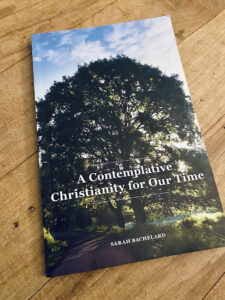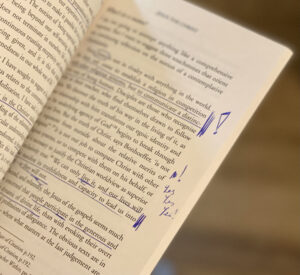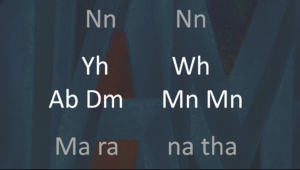Stillness and students? Really?
But first, a review of Rev’d Dr Sarah Bachelard’s new book A contemplative Christianity for our Time.

Never before have I experienced such an urgent drive towards Christian contemplative prayer than when reading this book. I didn’t know I was so hungry for it!
This book offers so much in so few pages. There is Bachelard’s laser sharp logic, rigorous egoic restraint, meticulous sequential methodology and compelling call upon the heart to partner with the heart of God.
Rather than being overwhelmed by a towering intellect formed in years of self-emptying contemplation, the reader is accompanied by a friend and drawn into this heart space. This is an in-between zone, between self and true self, between being and fullness of being, the incomplete and fulfilled. Like I said, I didn’t know I was so hungry for this kind of prayer.
This prayer is bound to hope-filled action, a bond that should not surprise when the prayer opens the space deep within, where the love of God and God’s love for the world is experienced directly. Bachelard reveals so powerfully the originality of God’s universal love whose work in Christ is to draw the universe into wholeness. Whilst the book never pretends to offer a ‘how to’, the invitation to participate in this way of being in the world, as Bachelard presents it, is irresistible.
Never before have I experienced such an urgent drive towards Christian contemplative prayer!
Stillness and students in schools
There are lots of ways to teach students how to engage in silence. I am not an expert but have had a serious crack at it for over a dozen years, with both primary and secondary students. Here below are some things I have found helpful in creating the space for silence. They relate to the use of one’s body, breath and the use of a mantra. The following steps takes weeks to grow into and years to practice and a culture of willing participation from staff.
A side note on stillness: allow yourself
Students. When you hear that up to ten minutes of silence will be shared today in chapel, I hope that triggers a bodily sigh of excitement and expectation. Maybe nowhere else in your day or days are you given the space to delight in the alignment of your mind in your body with your soul in a place in this moment, free of expectations and judgment. If you allow yourself, this time will be peace-filled, restorative and enlivening. This alone is enough. It can also be more. It can be a genuine meeting of yourself with the great Other, whose chief activity is Love.
On posture.
“Tall”.
This is the cue for how to sit: “tall”.
Feet flat, lumbar spine curved, hands resting gently on your lap. Eyes gently focussed on one spot or loosely closed. Our wiser ancients recognised that it is foolish to expect a person can exercise power over their mind and its thoughts which they cannot touch or see if they do not exercise power over their body which can be touched and seen.
On Breath.
Breath is the doorway. Focussing on your breath can centre you, eliminate distractions and draw you more closely into the hazy place. Hazy describes the space between visible and invisible, material and spiritual, past and future, self and other.
To use the breath you should gently fix or close your eyes, then choose a spot on which to focus your mind’s eye and notice your breath as it enters and leaves your body. If you are just starting, it is recommended that you train your attention to your nose. If you have been doing this for a while, you can focus anywhere from your nose to deep inside your lungs. Years and years later, you could focus on your stomach.
When you notice your attention has drifted off and wandered away, return to watching your breath. When you begin, you may need to do this a hundred times.
On the use of a mantra
When we welcome stillness and turn away from every distraction, we can notice a whole range of activities and sounds outside our body. And we can notice a whole range of activities within, from thoughts to feelings to memories and more. We can encounter the mind as it chatters like a thousand monkeys. Having a mantra can be super helpful, like a gentle wash of the waves onto the shore (an in-between place), a mantra can become like white noise that calms the monkeys down. A mantra is a sound, a word, that requires no effort or concentration and hums to an incoming and outgoing breath.
There are at least three kinds of mantras: make up your own; borrow one (and make it mean something, religious or not); receive and use an ancient Christian mantra.
You can choose your own sound. Make up your own word: ‘Nn’. It doesn’t need to have any meaning and it could be in another language.
One student has used gumboots, another mama mia. Without concentrating on the sound, it is repeated on your incoming and outgoing breath.
You can borrow Yh Wh. It is just the sound of breathing in and breathing out. Or you could borrow Ab Dm Mn Mn. The abdomen is the geographical centre of your body. Both are just sounds. Choose one. Use it for the next ten years.
These two words can also be profoundly spiritual and specifically Christian prayers. ‘Yh Wh’ is how our ancients scored the sound of breathing, and is the sacred, unspeakable name for God. YhWh is God’s name. This could be a profound, unconscious embrace of the hazy space, a generous welcome, open to meet God.
So too ‘Ab Dm Mn Mn’. Ab is at the core of the sacred Aramaic name for God. Dm is short for domain or rule. Mn is just the wonderful sound of human delighting. So ‘ab|dm|mn|mn can become a deep, unconscious prayer of welcome, “Abba, Holy God; your peaceful reign is welcome here; Mnnnn and Mnnn, yes and yes.”
Or you could use the oldest Christian mantra, maranatha. It is Aramaic and translates roughly as ‘O Lord draw near’. You would use it as four syllables of equal length, two in
breathing in, two on breathing out: ma ra | na tha.
I finish with a little reflection on stillness and freedom. The idea is simple. Unless we can exercise some agency over our inner life, we will always be the subject of it. This may sound a little adversarial or oppositional. It simply seeks to promote silence, albeit using a very western and rational proposition. When silence and stillness are in many ways anathema to our dominant culture, any aid is considered useful.
Embracing Stillness and Freedom: an apology
Breath is the door.
Be aware of your breath. Focus attention on your breath, lightly.
As you attend to your breath, you can slow it.
If you can slow your breath you can exercise power over your body.
If you can exercise power over your body you could control your posture.
If you can control your posture,
you may draw near to your thoughts, lightly, and slow them.
And if you can slow your thoughts you can let them go.
And if you can let them go, you can draw near to other inner forces like:
emotions and desires,
fears and prejudices,
urges and anger,
and by drawing near, you can exert some authority over them.
Until we can train our awareness,
and control what we can touch and see,
we will never have power over what we cannot see –
we will always be done to by our interiority –
and we will be our own victim, unaware and un-free.

No Comments Yet